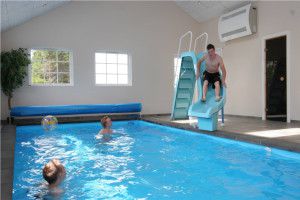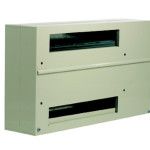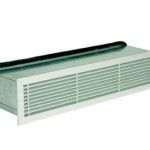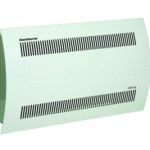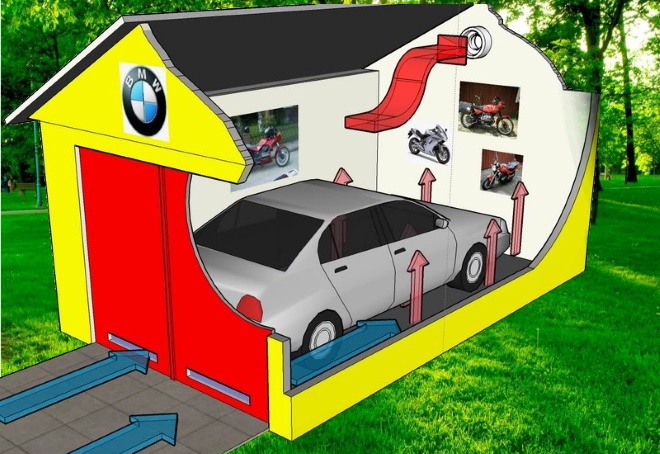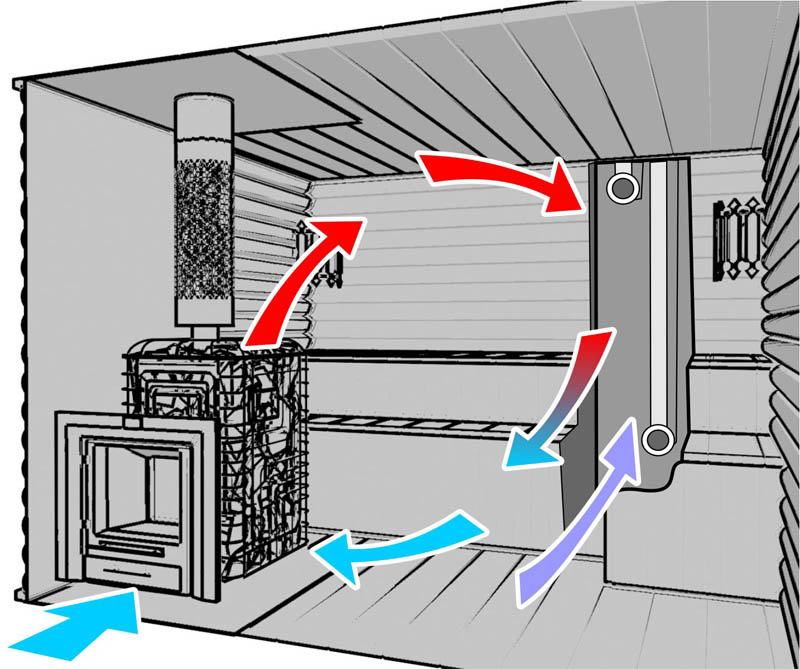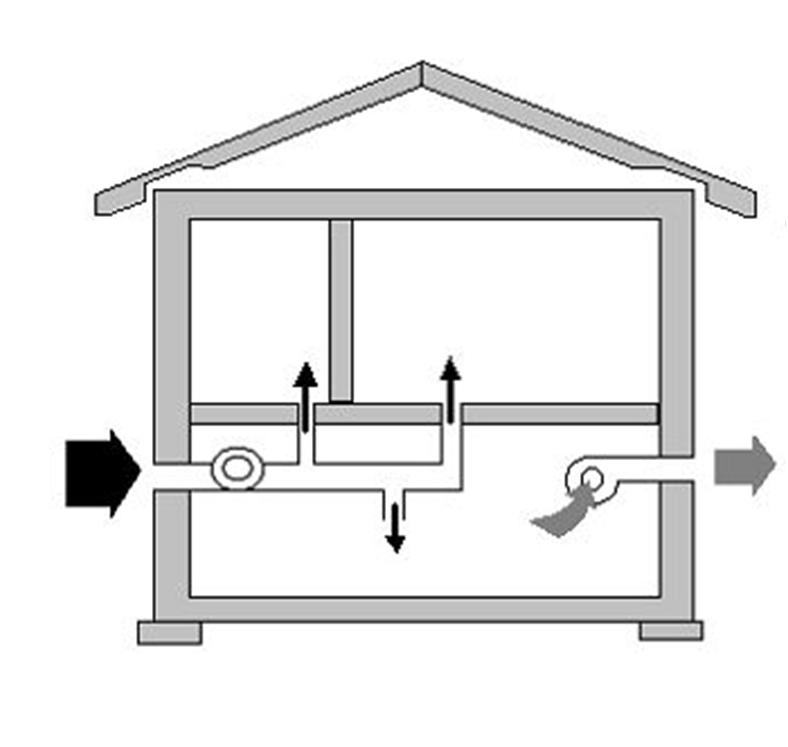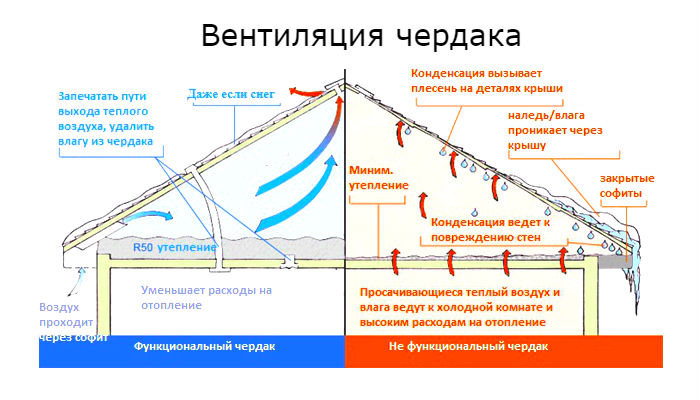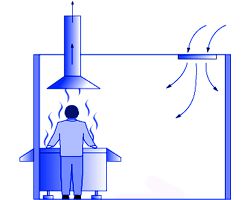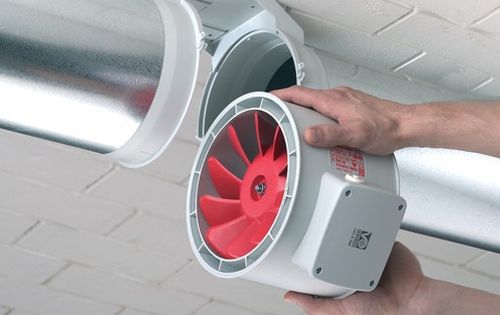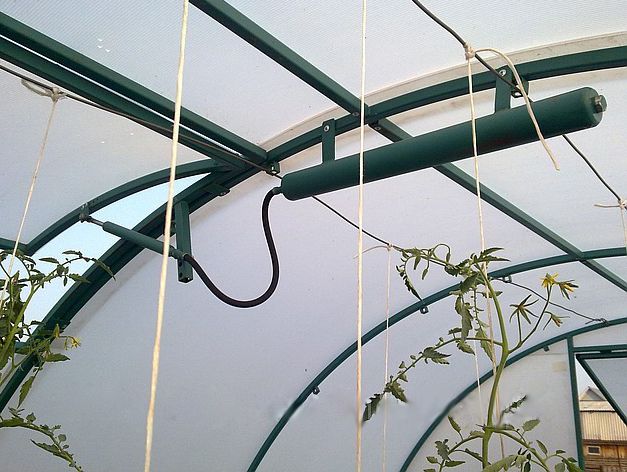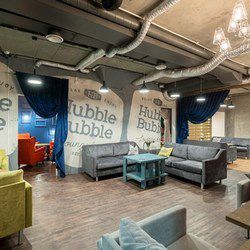- On the need for ventilation of swimming pools
- The microclimate of the pool room
- Ways to reduce humidity in the pool room
- Moisture condensation in the pool
- Water assimilation in the pool
- Combined pool dehumidification method
- Ways to keep the air temperature and remove odors in the pool
- Supply and exhaust ventilation scheme of the pool
- Possibility of heat recovery in the pool
- Pool ventilation design rules
- Features of the design of ventilation of pools in cottages
- Selection of equipment and automation of pool ventilation
- Pool air conditioners
On the need for ventilation of swimming pools
Water constantly evaporates from the vast area of the pool water surface, droplets settle on the ceiling, windows and walls. In such a humid and warm environment, pathogens of mold and fungi feel great. The same cannot be said about the pool visitors. Structural elements are also seriously damaged. Condensation does not just look unattractive, it gradually destroys the finishing materials.
Increased humidity in the room leads to the following consequences:
- metal structures are covered with rust;
- a fungus develops;
- plastered surfaces swell and collapse;
- painted parts fade, become stained;
- the conductivity of insulating materials increases, the likelihood of electric shocks appears.
This is why ventilation systems are mandatory in swimming pools. If we are talking about water parks or indoor sports pools, additional dehumidification is usually required.
Air humidity is one of the most important parameters that determine the quality of ventilation. Humidity is the amount of water vapor per unit volume of air. With high humidity, people find it hard to breathe. But too dry air in the pool is also a minus. Intensely evaporating, the water cools the swimmers' bodies, causing discomfort.
When designing the ventilation of the pool, the operating mode, climatic conditions of the area and the wishes of the customer are taken into account. The peculiarity of pool ventilation is that the design parameters are significantly influenced by the temperature of the water and air.
The microclimate of the pool room
The maximum amount of water that air can take at a certain temperature is called saturation humidity. An increase in air temperature leads to an increase in the level of this indicator. The moisture level in the air is determined by the mass in grams divided by 1 kg of air. If the saturation humidity threshold is passed, the excess settles on the walls, glass, and ceiling.
Before doing ventilation in the pool, it is necessary to reduce the evaporation of moisture, for which a certain combination of water and air temperatures is achieved.
The air temperature is 1 - 2 degrees higher than the water temperature.
The minimum amount of moisture evaporates, which means that the equipment for ventilation of the pool needs less powerful equipment. With equal air and water temperatures, the saturation point is reached with an air humidity of 100%.
But in order for people in the pool room to feel comfortable, the humidity should be from 50 to 65%. This indicator can be achieved only by means of a mechanical ventilation unit for the pool.
Evaporation is somewhat reduced if the water surface is covered with special shutters. Covered water hardly evaporates and does not cool due to evaporation.
For comparison:
- 2.3 liters evaporate from an open water mirror per hour;
- from a closed one - 1.2 liters per hour.
That is, saving resources is provided during the operation of the pool.
Ways to reduce humidity in the pool room
It is impossible to completely prevent the evaporation of moisture in the pool. But it is quite possible to reduce it by installing a dehumidifier, supply and exhaust ventilation, or a combination of both methods.
Reducing air humidity can be carried out in two ways:
- condensation;
- assimilation.
Moisture condensation in the pool

The air is forced through the dehumidifier where its temperature reaches the dew point. The moisture condenses, after which the air is heated to the desired temperature and returned to the room.
Such installations are good for ventilation of a pool in a cottage, where an inflow-blowout system cannot be implemented. The design is equipped with a hygrostat, which starts the compressor when the humidity reaches a certain reading. As soon as the humidity drops, the hygrostat stops the compressor. In this case, the fan can continue to rotate.
Condensing dryers are:
- Wall mounted, which are hung on the walls... They can be installed in a finished premise;
- Wall mounted hidden... All the equipment is hidden in the adjoining room, only the intake grill goes into the pool room. It is necessary to plan such a ventilation system for a pool in a private house during the construction phase;
- Stationary... These are powerful installations requiring a dedicated room. They can be included in the supply and exhaust ventilation system for the swimming pool of the sports complex. The stationary dehumidifier allows mixing 1/5 of the air volume. Air inflow and outflow are provided by a system of air ducts. Equipping the system with a duct heater, we get full ventilation.
Water assimilation in the pool

Supply and exhaust systems work according to this principle, using the property of air to absorb water vapor. With an approximate calculation, a 5-fold air exchange per hour is laid.
Often in temperate latitudes, only ventilation is enough to maintain the required microclimate in a small private pool. But when calculating the ventilation of swimming pools of sports or entertainment complexes, you cannot do without a dehumidifier. Especially if they are located in hot climates.
The assimilation method is good because the air is purified from unpleasant odors. Its most significant drawback is its dependence on the weather. If the humidity of the ambient air is high, then it will not absorb moisture once it gets into the pool room. However, in many cases, it is this scheme that is used in practice.
The second significant drawback is that the supply air must be heated. This is especially noticeable in the cold season, when a maximum of electricity is consumed for heating.
Combined pool dehumidification method
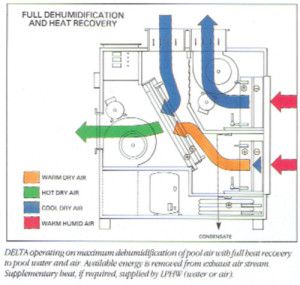
The optimal type of dehumidification and ventilation system for intensive swimming pools and large areas. Experts recommend using both a dehumidifier and forced ventilation. Systems can be independent, not connected in any way, or constitute a general microclimate control system.
This is an expensive equipment that justifies itself only in pools with an area of at least 50 sq. meters.
Ways to keep the air temperature and remove odors in the pool
The air temperature in the pool room must be kept above atmospheric. For this, a heating system is installed. The air coming from the supply ducts is heated to the temperature maintained by the heating system. However, the ventilation equipment is not designed to heat the room.
Air heating in this case does not justify itself, since the intensive movement of air accelerates the evaporation of water.It can only be used as an additional one if the main heating fails.
If the room is abundantly glazed, the pool is located in the southern region, and air conditioning is additionally provided.
In heavily visited large pools, natural ventilation is powerless, therefore forced air movement methods are used. They provide a stable temperature, fresh air supply, elimination of unpleasant odors and comfort for visitors.
Supply and exhaust ventilation scheme of the pool
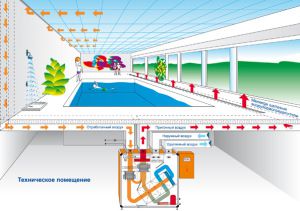
The most effective method to ensure the best conditions in the pool is to install a supply and exhaust ventilation.
Advantages of the supply and exhaust system:
- an inflow of fresh air is provided;
- excess moisture is removed from the pool room atmosphere.
The system is equipped with a dehumidifier, and the excess heat is discharged outside. It is autonomous and is not connected with air exchange in the rest of the building. Ventilation ducts are made of moisture-resistant materials. The equipment is controlled by an automatic system that maintains a constant temperature and a mixture of clean air.
The air from the street, before being supplied to the room, is filtered, cooled or heated, and its humidity also changes depending on the specified parameters.
Swimming pool microclimate parameters:
- water temperature +26 - 31 degrees;
- air temperature +27 - 32 degrees;
- humidity from 50 to 65%;
- air exchange for 1 visitor 80 cubic meters per hour;
- air speed up to 0.2 meters per second;
- concentration of chlorine molecules up to 0.1 milligram per cubic meter of air.
Swimming pool water temperature in saunas:
- hot +35 degrees;
- cold +15 degrees.
Possibility of heat recovery in the pool
A pool ventilation system in a cottage or water park with heat recovery will save significant costs on heating the supplied air. The recuperator uses the heat from the exhaust air to heat the fresh air. The heat exchanger can have a plate structure, rotary or work on the principle of a heat pump.
Recuperation in summer time allows to cool the air supplied inside. On average, the savings are about 70% per year. The unit is equipped with filters and a heater, which, if necessary, brings the air temperature to the required one (for example, in winter).
Pool ventilation design rules

Swimming pool ventilation design is a complex process that takes into account many nuances. Only a specialist can competently plan the ventilation of the pool with your own hands.
When calculating the ventilation of the pool, consider:
- moist and heated air masses rush to the ceiling;
- Condensation forms on all cool surfaces.
You can install equipment for ventilation of any pool both in the adjacent room and under the bowl itself, around it, on top or on the wall. Often, supply grilles are placed around the pool or on both sides of it, contributing to the speedy displacement of the exhaust humid air up to the hood.
Pool ventilation scheme No. 2 One of the conditions for a comfortable stay in the pool is the absence of drafts. It is achieved by equalizing the supply and exhaust air volumes;
- In places where visitors are located, air movement should not exceed the above threshold. You can slightly reduce the intensity of movement using special ventilation schemes in the pool or special types of grilles;
- Air supply to the hall is best planned under windows, the best conductors of temperature and the most vulnerable structural elements. The flow of dry air from the ventilation ducts prevents condensation from settling on the glass. At the same time, getting on the glass, warm air cools down.Therefore, it should be fed directly in front of the surfaces, without reaching them;
- Exhaust ducts are mounted under the ceiling: in places where moisture and heat accumulate, above the supply ducts. Otherwise, fresh air will be instantly drawn out;
- If the room has suspended ceilings, the need for ventilation should also be taken into account. Otherwise, zones of high humidity are formed above them;
- In order not to increase the evaporation of moisture from the surface, air currents should not pass directly over the water table.
Outside air is an important component in the operation of the supply and exhaust ventilation of the pool. Its temperature affects the performance and power consumption of the system. In frosts the air is cold and dry, in heat it is humid and warm. Thus, the ability to regulate air exchange allows you to create a comfortable microclimate without wasting extra resources.
Adjustment is carried out using fans that increase or decrease the intensity of the blowing and the volume of the air masses being moved. Manual or automatic control method is used.
Another important parameter in the calculations of the pool ventilation is the supply air temperature. It is heated by electric heaters before being fed into the room, and a well-calculated temperature allows you to save on heating the hall.
Features of the design of ventilation of pools in cottages
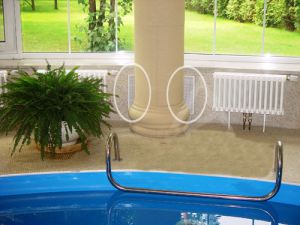
When designing the ventilation of a private house pool, the following features are taken into account:
- the temperature of the water in the pool according to domestic standards is +30 - 32 degrees, according to European standards +28;
- air temperature according to European standards exceeds the water temperature by 2 - 4 degrees, according to domestic standards by 1 - 2 degrees;
- the outflow of air can prevail over the inflow by 0.5 times;
- the noise level from operating installations should not exceed 60 decibels;
- as a rule, no more than 2 people swim in the pool at a time;
- use of the pool is occasional, not long-term;
- blinds and curtains for water mirror are widely applied.
Air handling units are used as equipment for ventilation of the pool, they can be separate, but always autonomous from the main air duct system of the house.
When placing the supply grilles around the pool, discomfort is created from the movement of air masses, which is understandable given the small area of the room.
It is advisable to use dual-mode installations: the supply is started separately from the exhaust. When the pool is not in use, it is sufficient to ensure the outflow of moist air from the room.
Many customers require discreet ventilation in the pool that does not interfere with the design and architecture.
Selection of equipment and automation of pool ventilation
The selection of the scheme and equipment for ventilation of the pool in the cottage is based on careful calculations. Any factors that change the rate of evaporation are taken into account:
- pool area;
- indoor water and air temperature;
- calculated indicators of humidity;
- visiting mode;
- number of visitors;
- water coverage;
- the volume of the hall in which the pool is located.
For calculating the ventilation of swimming pools, data on average humidity and temperature during cold and warm seasons are also required.
The automated control system allows, having once set the necessary parameters, no longer remember about the ventilation of the pool of your private house. The electronics will automatically determine the volume of inflow, outflow in case of temperature or humidity changes.
Automation systems capabilities:
- starting or stopping ventilation (at a certain time or depending on the characteristics of the air);
- control over humidity and air temperature;
- protection of equipment from power surges;
- notification of equipment malfunctions;
- integration into the "smart home" system.
Pool air conditioners
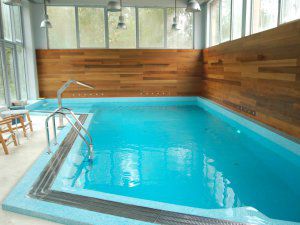
This is the embodiment of the latest technologies that allow you to purchase equipment for pool ventilation with your own hands. Pool air conditioners create the required microclimate, are fully automated and operate in the following modes:
- Heating the room... The built-in heat register allows you to warm up the air in the hall where the pool is located;
- Air dehumidification... The process takes place in a heat pump, where the air temperature drops to the dew point and drops of moisture are deposited on the walls of the evaporator, flowing into the condensate collection tank. Then the air enters the heat exchanger and is warmed up before being supplied to the room;
- Fresh air admixture... This function allows the air conditioner to completely replace the pool ventilation circuit by supplying heated and filtered air to the room. Warming up occurs due to heat recovery from the exhaust air;
- Summer mode... If the ambient temperature exceeds the room temperature, this mode is started;
- Enhanced dehumidification... This mode is included in the private pool ventilation scheme at will. It is necessary in areas with high atmospheric humidity.
The air conditioner makes ventilation in the pool easy to operate and install. For a country house, this is ideal. But there are also more powerful models for therapeutic or public pools. The technologies used make it possible to minimize operating costs. The power of the fans, as well as the work of all other nodes, is controlled by an electronic switch.
The air conditioner unit is protected from corrosion by polymer material and insulated.
Control is carried out by a remote control equipped with a screen, as well as an additional remote control. The screen displays information about the temperature and humidity of the room. Many models are equipped with modems for remote control.
Such systems allow you to very accurately maintain the microclimate in the room, providing high-quality ventilation of the pool. The owner can choose the right equipment with his own hands.

